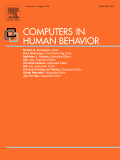Interface Agents as Social Models for Female Students: The Effects of Agent Visual Presence and Appearance on Women's Attitudes and Beliefs
The current work investigates the use of interface agents as anthropomorphic social models to influence young women’s negative beliefs and low self-efficacy regarding engineering. Experiment 1 focused on the impact of agent model visual presence vs. voice alone for changing the women’s beliefs. Based on literature on human social models we hypothesized that the visual presence of the interface agent would result in more positive attitudes toward engineering and greater self-efficacy than the presence of a human voice alone. Experiment 2 focused on the impact of model appearance-related characteristics for changing the women’s beliefs. Previous work with human social models suggests that people are more persuaded by models that are similar to them. Therefore, models that were young, female, and ‘‘cool” were predicted to be more effective in influencing young women’s attitudes. In accordance with our hypothesis, results revealed that participants who interacted with the visible agents reported significantly greater utility for engineering, greater self-efficacy, and greater interest in engineering-related fields than those who interacted with a human voice. In addition, the agent models that were similar to the young women tended to be the most effective for positively influencing the women’s stereotypes and self-efficacy.

